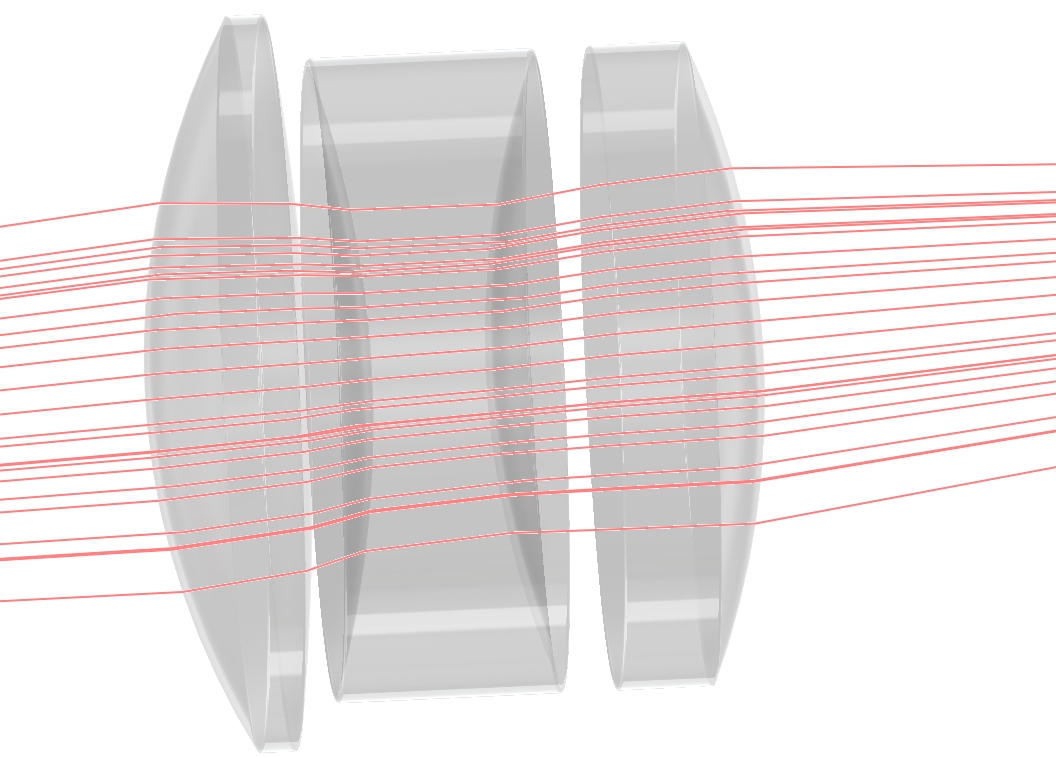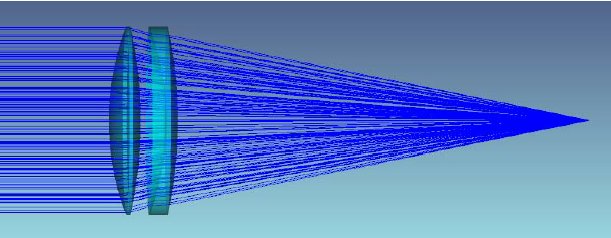home consulting products & tools clients about

OPTICAL SYSTEM DESIGN
(781)
454-7648
Rockfield
Research has decades of experience in the design of complex optical
systems. Let us help you with yours.
________________________________________________________________________
Zemax: Rockfield Research has a license for Zemax EE, the advanced engineering version of the popular raytrace package. We specialize in running Zemax in "non-sequential" mode, for complex 3D problems, particularly non-imaging and illumination systems.
Zemax is a product of Zemax. Zemax manages a "Knowledge Base", where users share techniques and solutions. See Rockfield Research authored articles published on the Zemax Knowledge Base here and here.
Rockfield Research is a leader in development of add-in extensions to Zemax (see below), enabling solutions which lie beyond the "off-the-shelf" capabilities of commercial raytrace codes.
In house tools: We also maintain an extensive in-house raytrace tool - in use for over 30 years - for custom jobs which require non-standard solution approaches.
Zemax: Rockfield Research has a license for Zemax EE, the advanced engineering version of the popular raytrace package. We specialize in running Zemax in "non-sequential" mode, for complex 3D problems, particularly non-imaging and illumination systems.
Zemax is a product of Zemax. Zemax manages a "Knowledge Base", where users share techniques and solutions. See Rockfield Research authored articles published on the Zemax Knowledge Base here and here.
Rockfield Research is a leader in development of add-in extensions to Zemax (see below), enabling solutions which lie beyond the "off-the-shelf" capabilities of commercial raytrace codes.
In house tools: We also maintain an extensive in-house raytrace tool - in use for over 30 years - for custom jobs which require non-standard solution approaches.
____________________________________________
Imaging Systems: Conventional optical designs produce an image for viewing by eye or by film or optoelectronic sensor. Examples are camera lenses, telescopes, microscopes, collimators, etc.
An optimized imaging system will meet your specifications for distortion and aberration with minimal size and weight, and with attention to manufacturing costs. Modern fabrication techniques have enabled aspheric elements, new materials, and micro-lens arrays to vastly improve your optical design. Let us help you get there.
Imaging Systems: Conventional optical designs produce an image for viewing by eye or by film or optoelectronic sensor. Examples are camera lenses, telescopes, microscopes, collimators, etc.
An optimized imaging system will meet your specifications for distortion and aberration with minimal size and weight, and with attention to manufacturing costs. Modern fabrication techniques have enabled aspheric elements, new materials, and micro-lens arrays to vastly improve your optical design. Let us help you get there.



Non-Imaging Systems: Many optical systems cannot be modeled by the same methods as imaging systems. These include illumination systems, complex 3D geometries such as paraboloid or ellipsoidal reflectors, systems with total-internal reflection, biological systems, and others. Non-sequential ray tracing is called for, particularly when we have an indeterminate number of internal reflections (as in both of these images).
Optimization of non-imaging systems often requires a novel approach to quality metrics, and custom programming tools for optimization & evaluation.

____________________________________________
Fabrication Support: Custom optics houses must be as careful with metrics for evaluation of the surface curvature of their finished products as they are with their methods for turning and grinding the lenses in the first place. One standard technique used is to fabricate a "zero plate" (null lens) to correct a reflection off of the surface of interest, so that the resultant wavefront is planar with uniform phase. An interferogram thus shows deviations from the defined surface precisely to a fraction of a wavelength by fringe counting.
Rockfield Research can design custom zero plates for your application.
Fabrication Support: Custom optics houses must be as careful with metrics for evaluation of the surface curvature of their finished products as they are with their methods for turning and grinding the lenses in the first place. One standard technique used is to fabricate a "zero plate" (null lens) to correct a reflection off of the surface of interest, so that the resultant wavefront is planar with uniform phase. An interferogram thus shows deviations from the defined surface precisely to a fraction of a wavelength by fringe counting.
Rockfield Research can design custom zero plates for your application.

____________________________________________
Custom Optical Analysis:
Zemax DLLs: A powerful feature of Zemax is the open "back door", specifying how the user may write custom code to embed in the raytrace package in realtime. Rockfield Research has authored many of these elements for client jobs, including:
>>> Light source model to match commercial LEDs
>>> Light source model for plasma lamps
>>> Unusual surface geometries
>>> Matching surface scatter to biological matl's
>>> X-ray scatter coeffs for grazing optics
>>> Custom diffractive elements (holographic gratings, x-ray zone-plate imaging systems)
____________________________________________
Custom Optical Analysis:
Pre & Post Processing:
In many cases - particularly non-imaging problems - the pre-defined metrics for evaluation are unsuitable. Rockfield Research has many tools to write custom raytrace code, or more efficiently, to write pre and post processing code to link to Zemax system runs. Zemax allows for ray-bundle input files, and publishes output formats for "dump" files, facilitating this process.
Rockfield Research has solved customer problems with these techniques for applications such as non-linear effects (laser self-focusing), pairs of linked optical systems (emission from a hot plasma ball at a laser focus), and systems with complex surface & bulk scatter properties (in situ medical diagnostics).
Custom Optical Analysis:
Pre & Post Processing:
In many cases - particularly non-imaging problems - the pre-defined metrics for evaluation are unsuitable. Rockfield Research has many tools to write custom raytrace code, or more efficiently, to write pre and post processing code to link to Zemax system runs. Zemax allows for ray-bundle input files, and publishes output formats for "dump" files, facilitating this process.
Rockfield Research has solved customer problems with these techniques for applications such as non-linear effects (laser self-focusing), pairs of linked optical systems (emission from a hot plasma ball at a laser focus), and systems with complex surface & bulk scatter properties (in situ medical diagnostics).

___________________________________________________________________________